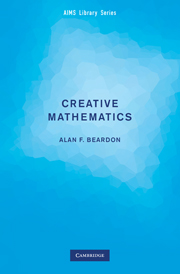23 - Problem H: Discussion and Generalisations
Published online by Cambridge University Press: 16 May 2024
Summary
First, suppose that k is an integer. If the segment L(k) meets the square S(a, b) thenL(k) ∩ S(a, b) is either a diagonal (of length) of S(a, b), or a vertex (of length 0) of S(a, b). It is easy to see that there are approximately twice as many squares S(a, b) for which the intersection is a point as there are for which the intersection is the diagonal. Thus the limiting answer should be (which it is).
Now consider the second question in Part III. As t has a uniform probability distribution on [0, 2], the appropriate probability density function is dt. Next, a simple calculation gives
Since it is obvious that 0(t ) = 0(2 − t ) we need only verify the first formula here. However, we should also verify the second formula directly as this will serve as a check on our working. In any case, the expected value of 0(t) is
which is the same as the limiting value of A(k) as k→∞ avoiding integer values.
Now consider the three-dimensional problem. For non-negative integers a, b and c, let C(a, b, c) be the cube in R3 that corresponds to the square S(a, b) in R2. Also, for each integer m, let (m) be the number of triples (a, b, c) of non-negative integers such that a + b + c = m.
- Type
- Chapter
- Information
- Creative MathematicsA Gateway to Research, pp. 97 - 98Publisher: Cambridge University PressPrint publication year: 2009



